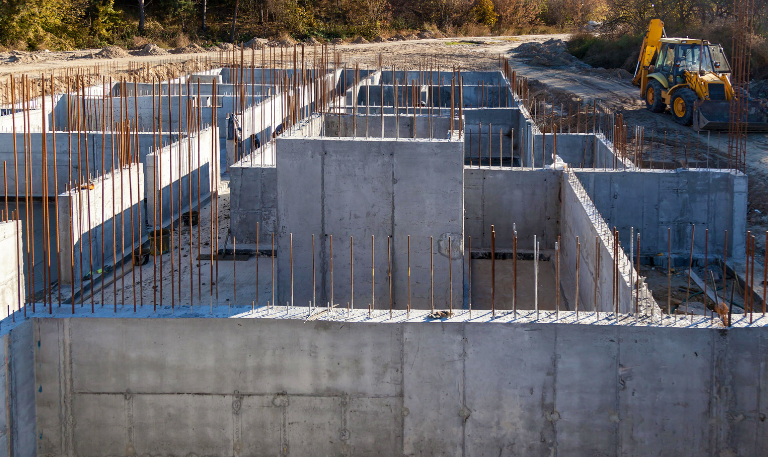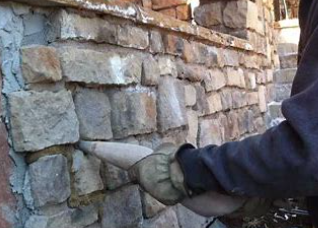FAQ on Block
Weights
Standards applicable to CMU (concrete masonry units) contain three classifications of weight, expressed in pounds per cubic foot (lbs/cu ft): Normal Weight, Medium Weight, and Lightweight.
Normal Weight is 125 lbs./cu. ft. and over
Medium Weight is 105 to less than 125 lbs./cu.ft.
Lightweight is less than 105 lbs./cu. ft.
Of the three weights, Normal Weight is the least expensive and Lightweight is the most expensive. Medium Weight is popular for structural applications as its moderate weight and cost generally offer the best productivity to cost ratio. How much block do you need? Block Calculator
Strengths
Strength, as associated with CMU, is expressed in two distinct values:
- CMU Compressive Strength is the psi calculated from the net area of the individual unit. The minimum average net compressive strength per ASTM C90, as of the 2022 edition, is 2000 net psi. Previous editions of C90 indicated 1900 net psi.
- f’m, Specified Compressive Strength of Masonry, is the value used in design of the masonry wall. It is the compressive strength of the assemblage of masonry units, mortar, and grout. This is the strength specification that matters, f’m is the strength upon which the structural design is based.
TMS 402/602 requires compliance with the specified f’m value. One of two methods must be used (not both):
- Unit strength method. Code allows an “assumed” value of f’m to be selected based upon specifying the net compressive strength of the masonry unit. (TMS 402/602 Table 2.) Unit strength relies on individual CMU and masonry grout strengths, and the type of mortar. For example, specifying a high-stress unit at 3250 net psi, an f’m of 2500 net psi would be allowed without substantiation by prism test.
- Prism testing. Although prism tests may require a bit more coordination in project management, compression testing of prisms does offer the most accurate verification of f’m. A prism is a sample assemblage of masonry units, mortar joints, and grout similar to the one shown.
When the f’m value exceeds 2000 net psi, we recommend specifying the f’m as required by design and verifying compliance by means of prism testing. In this way, testing more reliably portrays actual construction, and full values are realized in design and materials. This reduces overdesign and saves you money.
Prism testing also allows the contractor to submit and supply a combination of cmu and grout most advantageous for the project schedule. The conservatively high CMU values utilized by the unit strength method may force materials to be made on special order with significant lead times. Many times, however, the f’m can be satisfied by available materials coupled with an appropriate grout strength.
Dimensions
Three terms are used in referring to dimensions: specified, actual, and nominal. Variations in dimensions are governed by ASTM C90 Standard Specification for Loadbearing Concrete Masonry Units. C90 includes exceptions for split and slump textures.
- Specified dimensions are those specified for the manufacture of masonry units or the construction of masonry. Design calculations are based on specified dimensions.
- Actual dimensions are the measured dimensions of the unit. ASTM Standards allow the actual overall dimensions a permissible variation of ±1/8 inch. from the specified dimension.
- Nominal dimensions are those used in stating the unit size. They are equal to the specified dimensions plus the thickness of the mortar joint.
For standard units, no actual dimension (width, height, and length) may differ by ±1/8-inch from the specified dimension.
For split face only the non-split overall dimensions may not vary by more than ±1/8-inch from the specified non-split dimension.
Standard Units Dimensions
| Nominal Size | Specified Dimensions |
|---|---|
| 4x8x16 | 3.625 x 7.625 x 15.625 |
| 6x8x16 | 5.625 x 7.625 x 15.625 |
| 8x8x16 | 7.625 x 7.625 x 15.625 |
| 10x8x16 | 9.625 x 7.625 x 15.625 |
| 12x8x16 | 11.625 x 7.625 x 15.625 |
| 16x8x16 | 15.625 x 7.625 x 15.625 |
Dimension Statement
Dimensions must be stated in proper order – width, height, and length (WHL). For example, an 8-inch wide, 16-inch long, 4-inch high unit is termed an 8x4x16. Reversing any two dimensions will describe a completely different unit. Using that same unit, but referring to it as 4x8x16 would inadvertently indicate a unit 4 inches wide and 8 inches high (not 8 inches wide and 4 inches high).


Masonry Sales RepresentativeMatt Henshaw
Latest News

4 Ways To Reinforce Concrete
Concrete is one of the most fundamental materials used in construction. If you’re working on a domestic project or a […]

The Environmental Benefits Of Using Ready-Mix Concrete
The construction industry is changing quickly to meet the growing demand for sustainability and eco-friendly practices. One of the most […]

6 Essential Tips For Grouting Stone Veneer
Grouting stone veneer is an important step in the installation process that can significantly impact the overall look and durability […]

Should You Fill Hollow Concrete Blocks?
Hollow concrete blocks are widely used in construction due to their strength, versatility, and lighter weight compared to solid blocks. […]
